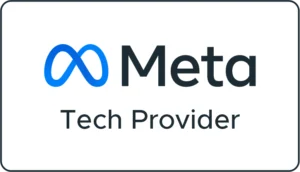Elevate Your Content with Premier On Page SEO Services by our Experts

In the digital age, where content is king, standing out in the vast sea of online information requires more than just compelling content; it demands mastery over on-page SEO. On-page SEO—the art of optimizing individual web pages for search engines and users alike—is your toolkit for ensuring your blog not only reaches its intended audience but captivates them. This guide dives deep into the essential strategies for enhancing your blog’s visibility, speed, and user experience.
How to Understand On-Page SEO
On-page SEO is the process of making changes to individual web pages so that they rank better in search engines and get more relevant traffic. By optimizing the content, HTML source code, and pictures, you can make it easy for both search engines and people to find your content. When it comes to on-page SEO, you have full control over it, unlike off-page SEO, which is based on outside signs like backlinks.
Mastering On Page SEO Service: An SEO Strategist’s Blueprint
Key Strategies for On-Page SEO
To really get good at on-page SEO, make the following changes to the way you blog:
1. Optimize Your Titles and Headings
These are the first things people and search engines see about your content. Discover how “On Page SEO Service” can revolutionize your approach to crafting titles and headings. Not just focusing on incorporating keywords, these services ensure your headings are both engaging and informative, structured effectively with the right header tags to catch both the reader’s eye and the search engine’s favor. Get them to count by:
- Including target keywords naturally.
- Making them engaging and descriptive.
- Using header tags (H1 for titles, H2-H6 for subheadings) to structure your content effectively.
2. Meta Descriptions: The Art of First Impressions
Learn the art behind crafting meta descriptions with “On Page SEO Service” that don’t just attract clicks but promise value, incorporating keywords naturally within the optimal character limit. Understand the impact of a well-crafted meta description on your click-through rates and overall page performance.
- Write compelling, concise descriptions that include keywords.
- Keep them under 160 characters to ensure they display fully in search results.
3. Focus on Keyword Optimization
Keywords should be used naturally throughout your content, including in the title, headings, meta description, and body text. Avoid keyword stuffing, which can harm your rankings. Focus on user intent and make sure your content is relevant and valuable to the reader:
- Incorporate primary and secondary keywords naturally throughout your content.
- Use LSI (Latent Semantic Indexing) keywords to provide context and avoid keyword stuffing.
4. Pay focus on high-quality, useful content
Content is king in the SEO world. Search engines like high-quality, informative, and interesting material because it meets user needs and interests them.
- Add new posts to your blog on a regular basis.
- Use keywords naturally within your text.
- Ensure your content provides real value to your readers.
5. Optimize Your Images
Explore how “On Page SEO Service” aids in optimizing your images for faster page load times and better SEO, using descriptive file names and alt text. Learn about the significance of image compression and how it contributes to an enhanced user experience without compromising quality.
- Use file names that are clear and alt text that includes keywords that are relevant.
- You can decrease the size of an image file without losing quality by compressing it.
- To speed up a page, you might want to think about lazy loading pictures.
6. Improve Page Load Speed
A blog that takes a long time to load can make people unhappy and hurt your results. Minimizing HTTP requests, optimizing images and understanding how a faster website can significantly improve user experience and search engine rankings. Cut down on loading times by:
- Minimizing HTTP requests.
- Using a Content Delivery Network (CDN).
- Optimizing and compressing images.
7. Ensure Mobile-Friendliness
With more and more people looking on their phones, it is important to have a website that works well on phones. Emphasize the critical role of responsive design in today’s mobile-first world and how “On Page SEO Service” ensures your site delivers a seamless browsing experience across all devices, widening your reach and engagement:
- Your blog will look great on any screen if you use responsive design.
- Use tools like Google’s Mobile-Friendly Test to see how well your site works on phones.
8. Utilize Internal Linking
Internal linking helps search engines discover new pages and understand your blog’s structure. Understanding the importance of internal linking and how “On Page SEO Service” can help you link relevant content within your blog, using descriptive anchor text for improved navigation and SEO benefits.
- Link to blog posts that are important.
- Use descriptive anchor text that gives information about the page that is connected to.
9. Focus on User Experience (UX)
Highlight how prioritizing UX design, facilitated by “On Page SEO Service,” from easy navigation to the use of white space, plays a crucial role in reducing bounce rates and improving rankings by keeping users engaged and interested in your content. A good user experience keeps people on your site longer, which lowers your bounce rate and boosts your rankings:
- Ensure your site is easy to navigate.
- Use white space and visuals to break up text and enhance readability.
- Keep your design simple and intuitive.
10. Regularly Update Content
Fresh, updated content signals to search engines that your site is active and relevant. Learn how On Page SEO Service can help regularly review and update your content to reflect the latest information and trends, and consider adding new sections to keep your site dynamic:
- Regularly update existing content to keep it relevant and up-to-date.
- Add new information, update statistics, and refresh keywords to maintain SEO performance.

Final Notes
Mastering on-page SEO is a crucial component of successful blogging. By using these tips, writers can make their sites much more visible, get more visitors, and connect with their readers better. Do not forget that SEO is a constant process. Regularly reviewing and updating your on-page SEO elements will keep your site competitive and aligned with the latest SEO best practices. To stay ahead in the always-changing world of search engine optimization, you need to keep improving and updating your strategies.














